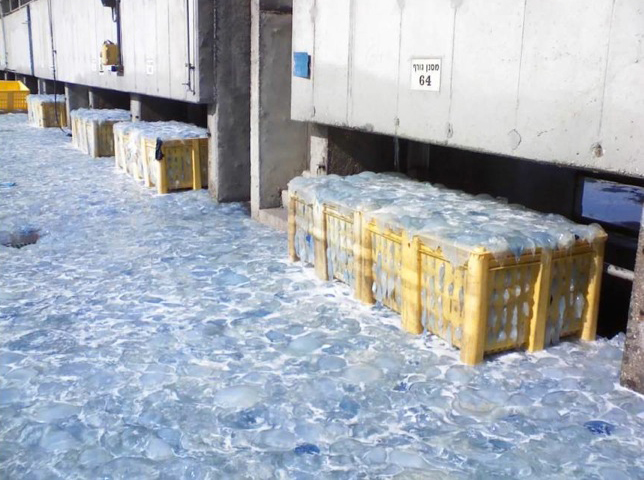The annual swarming of Rhopilema nomadica along the Levantine coastline began in early June and the swarm is larger, denser and composed of larger individuals than in previous years.
Reports of stung bathers are common and seaside first aid stations have their hands full. Fisheries are impacted both short term - cessation of
trawling - and long term - decline in stocks. Other economic impacts of jellyfish come from their effects on coastal industries such as
desalination plants and power stations, which use seawater cooling. Jellyfish have been removed, at a rate of a ton an hour for the past five
days, from the intake pipes of the cooling water system of a power plant along the central coast of Israel, lest they block intakes and screening
systems and cause its closure (see photo).

Photo legend: one ton/ hour of jellyfish (the alien scyphozoan Rhopilema nomadica) have been removed
from the cooling system
of the Orot Rabin power station, Israel, over the past week.
The Levant is the only place on earth where four alien scyphozoan jellyfish are known to occur concurrently. All four entered the
Mediterranean through the Suez Canal and established reproducing populations. The recurrent irruptions of jellyfish in the Mediterranean Sea should serve as alarm bells of the status of our marine ecosystem.
[from Bella Galil, coordinator of CIESM Task force on exotic species]
* to know more about CIESM JellyWatch program, click here



